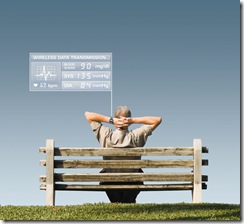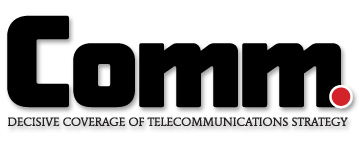It is no surprise that healthcare professionals are turning to wireless technology to significantly improve healthcare practices around the world. There are great challenges faced by national healthcare systems in terms of prevention and efficient provisioning of medical care to an ageing population with growing incidence of chronic diseases
With the patient’s prior consent, M2M solutions enable mobile health devices to remotely monitor, connect and communicate the patient’s health status to a medical specialist over the air
The delivery of healthcare through mobile technologies (mHealth) can provide an answer to the growing incidence of chronic illnesses. Remote wireless health monitoring will play a vital role in the development of new healthcare strategies aimed at improving access to and continuity of healthcare – while controlling costs at the same time.
A key technology to facilitate wireless health monitoring is cellular based machine-to-machine (M2M) communication. With the patient’s prior consent, M2M solutions enable mobile health devices to remotely monitor, connect and communicate the patient’s health status to a medical specialist over the air. Thanks to this technology, patients can benefit from specialised services in a timely fashion, wherever they are, especially in remote areas. Complementing face-to-face visits, M2M technology establishes an additional communication channel between clinicians and patients, removing geographic barriers and enhancing the quality of service delivery.
Unobtrusive and easy to use mobile health devices can suit a variety of telehealth purposes. This includes monitoring a patient’s medication compliance (pill reminder); managing elderly patients through wearable health monitors (assisted living), helping chronic disease patients, e.g. diabetics by providing assistance to bring blood glucose levels back to a normal range (chronic care management) and many more. Remote monitoring devices can automatically call for help (social alarms), enabling emergency services to react more quickly – and ultimately save lives.
Consistent and real time monitoring of vital parameters or behaviour allows for early detection of a deterioration of a patient’s condition thereby facilitating timely intervention to help reduce expensive emergency situations and hospitalisation. It also encourages more frequent interactions with patients based on medical data gathered in real life situations, improving the continuity of care.
Patient’s electronic health records have to be strictly confidential. How can healthcare providers ensure data is protected?
Security is indeed a key requirement for the adoption of electronic health records. Safeguarding the content of an individual’s online medical record is of critical importance and the subject of government regulations. M2M wireless technology allows for automatic and secure transmission of medical data from sensors straight into a patient’s record, delivering a clear and complete picture of all aspects of a patient’s health without compromising the privacy of the patient. Companies such as Gemalto now provide technology that enables healthcare devices to communicate over wireless networks in a highly secure fashion. Data transmission is based on the latest encryption technologies and security mechanisms inherent in modern cellular networks.
In addition, online security specialists are also able to supply healthcare providers with smart badges and strong authentication solutions to securely access patient records, ensuring only authorised personnel can retrieve sensitive patient data. Combining
M2M technology, smartcards and other solutions online security specialists can significantly improve end-to-end security in wireless networks, safeguarding patient information and meeting regulatory requirements.
Contribution by Axel Hansmann and Manfred Kube, specialists in M2M healthcare solutions at Cinterion (a Gemalto company)





0 comments ↓
There are no comments yet...Kick things off by filling out the form below.
Leave a Comment